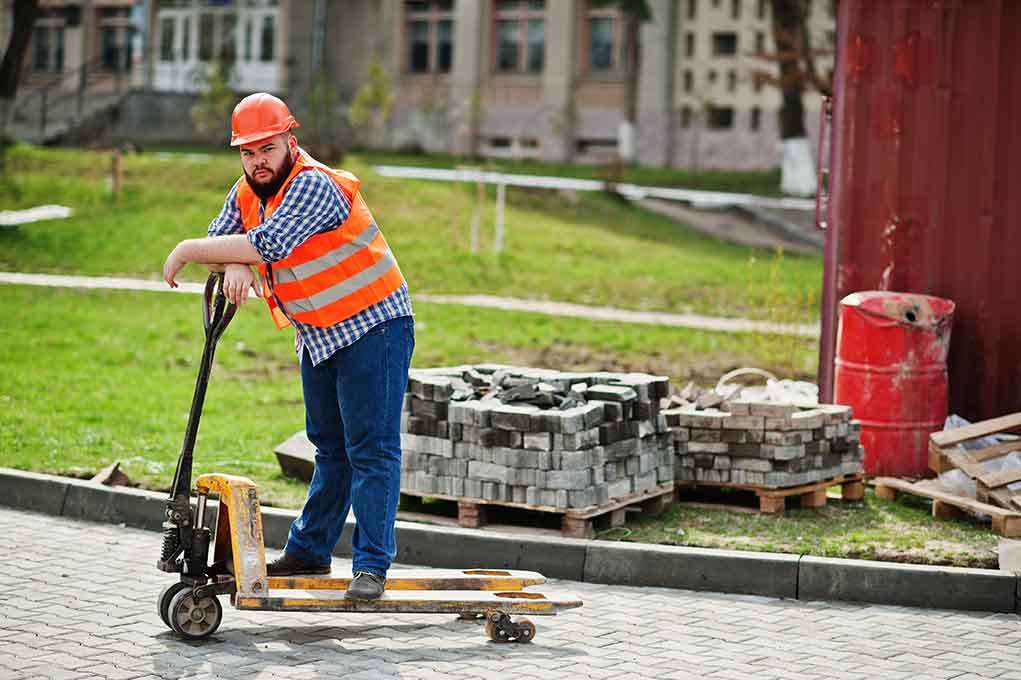This article serves as an introductory guide for beginners on laying block paving. It will explain the construction of block paving. The positive aspect is that block paving is achievable for individuals with a certain level of handiness and the willingness to acquire the necessary skills. Conversely, mastering it can be challenging and time-consuming.
However, don’t be discouraged; constructing your block paving can be highly satisfying and lead to significant cost savings.
What is the price of block paving per square meter?
Hiring a professional for block paving typically costs between £90 and £120 per square meter. However, the supplies are just approximately £20 per square meter, so you might save hundreds or even thousands of pounds by laying your own block paving.
Our guide walks you through the process of putting block paving step by step, replete with professional insider tips to help you save time and money.
In the initial section of the guide, we delve into the fundamentals of laying block paving. The subsequent part focuses on installing block paving on various surfaces and outlines the additional steps required for each scenario.
Throughout the guide, we will recommend time-saving tools that are highly recommended.
Part 1: Instructions for Installing Block Paving
Step 1: Preparing the Site
Before commencing the block paving process, it’s essential to clear and level the designated area. Block paving requires a stable and uniformly flat foundation; otherwise, it may gradually settle or sink.
Determine the excavation depth for the block paving installation in advance, which should account for the sub-base, sand base, and block thickness. Clearly outline the area and ensure you have a designated location for disposing of the excavated material. You can stack it up temporarily and arrange for a grab wagon to remove it later.
Determine the excavation depth for the block paving installation in advance, which should account for the sub-base, sand base, and block thickness. Clearly outline the area and ensure you have a designated location for disposing of the excavated material. You can stack it up temporarily and arrange for a grab wagon to remove it later.
Step 2: Foundation Layer
You should install and compact a foundation layer of crushed rock or hardcore using a Wacker plate. The intended purpose of the area should determine the depth of this sub-base. For heavier usage, a thicker sub-base will be required.
When creating driveways that will bear the weight of cars, it’s advisable to have a sub-base depth of 100mm. In the case of patios, if the underlying soil is compact and level, you might not need a sub-base.
What quantity of hardcore is required for the sub-base?
When procuring type 1 MOT (hardcore), it’s typical for it to be measured in weight rather than volume, although this can be less intuitive. To convert the volume to weight in (UK) tons, multiply the volume by 2.
Example: If you’re installing brick paving on an area of 10 square meters with a 100mm sub base.
Calculate the volume.
10 (surface area) multiplied by 0.1 (depth in meters) equals one cubic meter of hardcore.
Calculate the weight.
One multiplied by 2 equals 2 tons (2000kg).
How to determine if a sub-base is necessary
A sub-base might be optional when considering block paving for a patio or a low-traffic area. Properly compacted soil generally maintains its shape under moderate pressure, particularly when the load is evenly distributed by brick paving and a layer of sand.
To assess the soil’s firmness, apply your total body weight by stepping on it. If the soil yields and deforms under your foot’s pressure, it’s considered too soft, indicating the necessity for a sturdy hardcore sub-base.
During the compaction process for the brick paving sub-base, ensure that you thoroughly pass over each section with the compaction plate at least three times. Failing to execute this step correctly increases the likelihood of the block paving sinking and settling over time.
Step 3: Establishing the Foundation
The foundational layer should consist of a 50mm layer of moist, sharp sand, meticulously levelled using wooden rails. Since the blocks will be placed directly on this sand layer, ensuring even distribution and complete levelness is crucial. Utilize a spirit level to verify that the rails and flattening board are entirely level. Specialized spirit levels designed for this purpose can significantly expedite the process.
After laying the blocks, the base will undergo compaction, so ensure it is raised by 10mm above the intended level.
Step 4: Attending to the Perimeter
To maintain the stability of block paving, it’s essential to have robust edges that securely hold the blocks in place. Gaps at the edges can lead to block movement and sinking.
An edge can be a house wall, a concrete border, or any other feature with adequate strength to secure the blocks in their position effectively.
Step 5: Installing the Blocks
After the sand base is prepared, the next step is placing the blocks. Given that walking directly on the sand base is impossible, it’s essential to devise a suitable strategy tailored to the area you’re working on when brick paving.
Many blocks come equipped with spacing nodes, ensuring they are appropriately spaced as closely as possible when pushed together. Initiate the block installation from one flat surface and progress outward from there.
You may encounter challenging sections around the edges where some blocks must be trimmed to fit. This can be accomplished using a block splitter or an angle grinder, readily available for rent or purchase at most tool shops.
Initially, lay the blocks without being overly concerned about their precise alignment. Once all the blocks are in place, use a whacker plate to go over the surface repeatedly until they are uniformly level and satisfactory. Typically, this requires 1 to 3 passes with the whacker plate.
Tip: Ensure you have a clear pattern before installing to avoid needing later adjustments.
Step 6: Applying the Sand
The last step involves filling the gaps between the blocks with fine, dry sand. Acquire the appropriate sand for this purpose. Sprinkle the sand across the surface and utilize a brush to sweep it into the gaps.
This phase should only be undertaken when the surface is dehydrated.
Step 7: Sealing Block Paving (If Desired)
This step is entirely discretionary but is worth noting for its advantages. Block paving can endure for decades; however, it does demand a degree of maintenance. As time passes, the sand in the joints can erode, causing the blocks to become unstable and uneven. Typically, re-sanding the paving every two years suffices to prevent this issue. A top-quality sealant can help retain the sand in position, reducing the need for frequent replacement.
Weeds are likely the primary concern we’ve observed with brick paving. Regardless of your efforts, they tend to find their way into the joints over time. The sole long-term solution to prevent weeds in block paving is sealing the joints.
Part 2: Installing block paving on
Various types of surfaces
Installing block paving on a soil surface
Laying block paving directly on soil is not recommended as the soil does not compact uniformly beneath the blocks, leading to an uneven surface. However, when block paving a patio, excavating deeply into the soil for the base is unnecessary. If the soil is stable and firm, you can employ a sand base without incorporating a crushed rock sub-base.
Summary: Skip the sub-base stage mentioned above and proceed with the remaining steps of the process as usual.
Installing block paving on an incline
Many of us have gardens and driveways with slopes challenging to level. However, we still desire an aesthetically pleasing and functional space. Installing brick paving on a slope is achievable but requires additional effort and considerations.
Block paving relies on tension and gravity for stability. Consequently, if there is room for movement, the structural integrity will be compromised, leading to block displacement over time.
When installing block paving on a slope, the primary rule is to ensure the slope is consistent. If the slope is steeper at one end than the other, there may be areas where the blocks need to fit securely. The sand may shift as time passes, causing the blocks to shift as well.
If your garden has an uneven slope, it might be necessary to have it levelled before installing block paving.
Another alternative is to incorporate intermediate restraining courses. This involves placing concrete barriers at various intervals within the block paving. This method helps maintain the compactness of blocks within each section and simplifies the repair process if any slippage occurs, as it is confined to a specific section.
Installing block paving on a concrete foundation
Concrete can serve as an excellent alternative sub-base for block paving. If your concrete surface is even and relatively level, you can treat it like a compacted sub-base.
If your concrete base is in poor condition, featuring significant holes or showing signs of deterioration, removing it and starting the process anew is essential. Damaged concrete can lead to an uneven sub-base, distorting the blocks over time.
Transform your home effortlessly with FloorPup! Discover our extensive range of hardwood flooring, receive tips from expert floor care and maintenance professionals. Our team includes professional floor fitters, skilled driveway pavers, and dependable carpet repair specialists, ensuring top-notch results. Learn more about our dedication to quality on our About Us page. Visit FloorPup and start enhancing your living space today!
FAQS
Can you lay paving slabs straight onto the soil?
Yes, you can lay paving slabs directly on the soil, but it’s crucial to prepare the soil properly. Clear the area, create a stable base with sand or gravel, compact it, and place your paving slabs. This method works for low-traffic areas like patios or walkways.
Can you put paving on the soil?
Yes, you can, but following the proper steps for durability is vital. Begin by excavating the soil to the proper depth, compact it thoroughly, and then add a layer of sand or crushed stone as a stable base. This process ensures your paving remains secure and doesn’t shift over time.”
What is the best base for block paving?
The best base for block paving typically involves a combination of compacted hardcore and sharp sand. This dual-layer foundation offers essential stability, adequate drainage, and long-lasting durability, ensuring a successful and resilient block paving project.
How do you prepare the ground for block paving?
To prepare the ground for block paving, start by clearing the area of vegetation and debris. Then, excavate the ground to a depth of around 6-8 inches with a slight slope for drainage. Compact the soil, add a hardcore or MOT Type 1 aggregate layer, and compact it again for stability. Spread and level sharp sand as a bedding layer, and finally, lay the blocks, compact them, and fill the joints with sand for a secure and appealing block paving surface.


